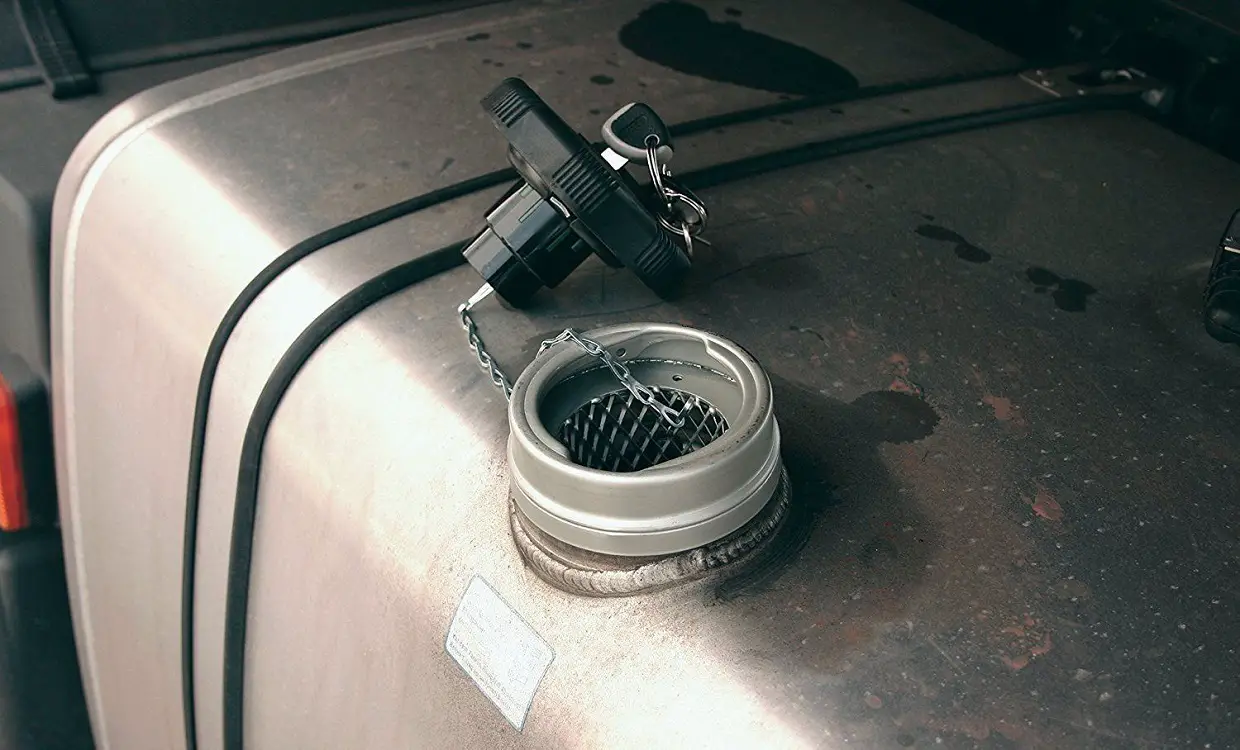SHTFPreparedness may collect a share of sales or other compensation from the links on this page.
Are you in an emergency? Do you urgently need to transfer fuel from one vehicle to another?
Then you need to know how to siphon gas out of a car. It can be a valuable skill in an emergency. However, you need to approach this process with caution. That way, you can avoid accidents, injuries, or damage to your car.
This guide will provide you with a step-by-step procedure of the best ways to siphon gas out of a car. We will explain the necessary tools and methods. This way, you can ensure that the operation is performed successfully without compromising your vehicle’s safety and integrity.
Before you begin siphoning gas out, it’s important to note one important thing. Some jurisdictions have specific laws or regulations regarding this activity. Before you begin, know about any legal restrictions in your area. This way, you can avoid problems with the law.
You will gain knowledge and confidence by following the instructions in this manual. You need them to siphon gas from your vehicle safely. It will enable you to deal effectively with fuel transfer needs.
Materials Needed

To find an easy way to siphon gas out of a car? Then you will need the following materials:
- Siphoning hose – Obtain a clean, flexible hose with a diameter suitable for fuel transfer. Ideally, it should be around 6 to 10 feet long to provide adequate reach.
- Container – Prepare a suitable container to collect the drained gas. We recommend that you use a clean and sizable gas canister. Or choose a fuel-safe container with a tight-fitting lid.
- Safety equipment – Prioritize safety. Be sure to wear protective gloves and goggles. That way, you can protect your hands and eyes from contact with the fuel.
- Funnel – A funnel can be useful for easily and trouble-free pouring gas into a container. It will come in handy, especially if the container opening is narrow.
- Gravity-assist device (optional) – If you want to siphon gas out of a car but the gas cylinder is lower than the collection container, a gravity-assist device, such as a hand pump or gravity-assist siphon, can help make pumping easier.
- Absorbent materials – Have absorbent materials on hand, such as rags or paper towels. This way, you can quickly clean up spills or drips.
Gather these materials before attempting to suck off the gas. This way, you will ensure a smoother and safer process.
Remember that safety should always be your top priority. Be especially safe when working with flammable substances, such as gasoline.
Method 1: Traditional Siphoning Technique (No Anti-Siphon Valve)

Note: This method applies to cars without an anti-siphon valve in the fuel tank. Some modern cars have built-in anti-siphon mechanisms. These make the traditionally easy way to siphon gas out of a car difficult or impossible.
- Safety first – Make sure that the vehicle and gasoline collection container are on a stable surface. Avoid open flames, sparks, or smoking in the vicinity, as gasoline is highly flammable.
- Locate the fuel filler neck – Open the fuel filler door and remove the gas cap to access the fuel tank.
- Insert the hose – Insert one end of the siphoning hose into the fuel filler neck until it reaches the bottom of the tank. Ensure a secure and tight fit to prevent leaks or spills.
- Create a siphon – Place your mouth over the other end of the hose and begin sucking the air out. Once you feel the gas flowing, quickly remove your mouth and let gravity do the work.
- Collect the gas – Direct the hose into the gas collection container. Position it below the fuel tank to maintain a continuous flow.
- Monitor the process – Keep an eye on the siphoning process. This way, you can avoid overfilling the tank or spillage. If necessary, adjust the hose to control the flow.
- Finish and clean up – After you siphon gas out of a car, carefully disconnect the hose. Put the gas tank cap back on the vehicle and fasten it tightly. Clean up any spills or drips with absorbent materials.
Remember to use this method only if the car lacks an anti-siphon valve. Always check local laws and regulations before attempting to drain gasoline.
Handle gasoline with extreme care to avoid accidents or injury.
H2: Method 2: Using a Fuel Transfer Pump

Using a fuel pump is an alternative best way to siphon gas out of a car. It can be more efficient and convenient. It eliminates the need for suction by mouth.
And it provides a controlled and accurate transfer of fuel. Here’s how to use a fuel transfer pump:
- Safety Precautions – As with any fuel-related task, prioritize safety. Ensure proper ventilation in the area and avoid open flames or sparks.
- Gather the Materials – In addition to the fuel pump, ensure you have a suitable container to collect the gas. Of course, don’t forget protective gloves and goggles.
- Locate the Fuel Filler Neck – Open the fuel filler door and remove the gas cap to access the fuel tank.
- Prepare the Pump – Connect the fuel pump inlet hose to the pump. Connect the outlet hose to the fuel transfer nozzle or nozzle.
- Insert the Pump’s, Intake Hose – Insert the intake hose into the fuel filler neck until it reaches the bottom of the tank. Ensure a secure and tight fit to prevent leaks.
- Power On the Pump – Follow the instructions provided with the fuel transfer pump to power it on. Most pumps operate using electricity or batteries.
- Begin the Transfer – Activate the pump to start the fuel transfer. Monitor the process and control the flow rate according to your needs.
- Collect the Gas – Point the nozzle or nozzle into the collection tank. Make sure you position it below the fuel tank for smooth movement. Then, the answer to how to siphon gas out of a car will be as easy as possible.
- Finish and Clean Up – After you have poured the required amount of gasoline, turn off the pump. Be sure to disconnect the intake hose from the filler neck. Replace the gas cap securely. Clean any spills or drips with absorbent materials.
Using a fuel transfer pump provides a more controlled and efficient method. It is the best way to siphon gas out of a car compared to the traditional way.
Always follow the pump manufacturer’s instructions and use caution. That way, you can avoid accidents or fuel spills.
Method 3: Safely Siphoning Gas with an Anti-Siphon Valve-Equipped Car
Is your car equipped with an anti-siphon valve in the fuel tank?
Then trying to use traditional methods of siphoning gas out of a car may damage the valve or the fuel system. But there are alternative methods to safely siphon gas out of a car equipped with an anti-siphon valve:
- Obtain an Anti-Siphon Valve Bypass Kit – Purchase a bypass kit specifically designed for vehicles with anti-siphon valves. These kits usually include a specialized tool or fixture. It allows you to overcome the limitations of the valve.
- Locate the Fuel Pump or Filter – Identify the fuel pump or filter in your vehicle. These components are usually located near the fuel tank. You can often access them from under the vehicle.
- Disconnect the Fuel Pump or Filter – Follow the instructions provided with the bypass kit. So you can safely disconnect the fuel pump or filter. This step may require the use of special tools or techniques.
- Connect the Bypass Kit – Connect the tool or tool from the bypass kit to the fuel pump or filter port. You will be able to gently bypass the anti-siphon valve.
- Begin Siphoning – Once the bypass kit is securely connected, use a siphon hose to suck gas like a conventional car. Remember to follow the traditional suction technique mentioned earlier.
- Monitor the Process – Keep an eye on the siphoning process to prevent overfilling or spills. Adjust the hose as needed to control the flow.
- Finish and Reconnect – Once you’ve siphoned the desired amount of gas, carefully remove the hose and the bypass kit. Reconnect the fuel pump or filter according to the manufacturer’s instructions.
It is important to note that you should bypass the anti-siphon valve with caution. You may do so only if absolutely necessary. Consult your vehicle’s owner’s manual or you can consult a professional.
You make sure that bypassing the valve will not cause any negative consequences. Always prioritize safety and follow local laws and regulations when handling fuel.
Final Thoughts
Well, now you know how to siphon gas out of a car and the three best methods. Siphoning gas out of a car can be useful in certain situations. But it is extremely important to prioritize safety and follow proper methods.
Whether using the traditional method, a fuel pump, or bypassing the anti-siphon valve, it is important to use caution, avoid sparks or flames, and handle gasoline responsibly.
Also, be aware of any legal restrictions or regulations concerning gasoline pumping in your area. When in doubt, consult your vehicle’s owner’s manual or seek help from a professional.
If you approach the process with care and knowledge, you can safely and efficiently handle fuel pumping needs or emergencies that may require it.
References:

















